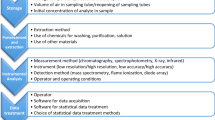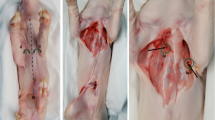Abstract
Carbon monoxide decreases the oxygen carrying capacity of blood. As a result, it reduces the supply of oxygen into body cells and tissues including vital organs. It is poisonous during pregnancy as it leads to high risk for the mother and foetus. It causes the developmental disorders, cerebral anoxic lesions and even death of foetus. The major aim of this study is to validate the non- invasive % COHb monitored data with modelled data. IAQ instruments are administered to monitor CO concentraction and % COHb level in recipient’s blood. Thus, the level of % COHb in blood is approximated using numerical modeling to validate the monitored data with modeled data. Twenty four hours average CO concentration with TCS house is found 8.65 ± 7.77 ppm, 7.39 ± 5.62 ppm, 6.69 ± 7.16 ppm, 4.76 ± 7.19 ppm, 4.48 ± 6.10 ppm in the order of case II > case I > case V > case III > case IV, respectively. Twenty four hours average CO concentration with ICS house is found 3.54 ± 4.41 ppm, 2.41 ± 3.93 ppm, 2.30 ± 2.24 ppm, 1.70 ± 2.93 ppm and 1.51 ± 1.24 ppm in the order of case I > case V > case II > case IV > case III respectively. The average CO concentration in breath by cook is found 3.75 (3.75 ± 2.35)ppm in ICS using house and 5.36 (5.36 ± 4.54)ppm in TCS using house with minimum 0.60 ppm and maximum 31.34 ppm. The CO exposure is found more than 13 h a day for TCS using house and 9 h a day for ICS using house. The average cook_CO exposure is found 5.36 (5.36 ± 4.54)ppm and 3.75 (3.75 ± 2.35)ppm in sampled house using TCS and ICS respectively. The average percentage COHb in sampled house using TCS and ICS is found 4.31 (4.3 ± 5.35) % and 3.72 (3.72 ± 2.67) % respectively. The correlation between numerical modelling of COHb with non- invasive COHb measurement is found significant i.e. P value <0.00001 establishing r2 value 0.95 and 0.97 for ICS and TCS using house respectively.


















Similar content being viewed by others
References
Thomassen Ø, Bratteb G, Rostrup M. Carbon monoxide poisoning while using a small cooking stove in a tent. Am J Emerg Med. 2004;22:204.
Centers for Disease Control and Prevention (CDC). Carbon monoxide poisoning from hurricane-associated use of portable generators--Florida, 2004. MMWR Morb Mortal Wkly Rep. 2005;54:697.
Hampson NB, Dunn SL. Carbon monoxide poisoning from portable electrical generators. J Emerg Med. 2015;49:125.
Centers for Disease Control and Prevention (CDC). Carbon monoxide poisonings resulting from open air exposures to operating motorboats--Lake Havasu City, Arizona, 2003. MMWR Morb Mortal Wkly Rep. 2004;53:314.
Hosgood HD 3rd, Pao W, Rothman N, Hu W, Pan YH, Kuchinsky K, Jones KD, Xu J, Vermeulen R, Simko J, Lan Q. Driver mutations among never smoking female lung cancer tissues in China identify unique EGFR and KRAS mutation pattern associated with household coal burning. Respir Med. 2013;107(11):1755–62.
Warwick H, Doig A. Smoke - the killer in the kitchen. Indoor air pollution in developing countries. ITDG Publishing; 2004. Available from https://practicalaction.org/docs/smoke/itdg%20smoke%20report.pdf.
World Health Organization. Indoor air pollution from solid fuels and risk of low birth weight and stillbirth. Johannesburg: World Health Organization; 2005. WHO Library Cataloguing-in-Publication Data
Stewart RD. Proceedings: The effect of carbon monoxide on humans. J Occup Med. 1976;18(5):304–9.
Guo Z. Z-30 indoor air quality simulator. Proceedings of the 7th international conference on indoor air quality and climate, vol. 2, pp 1063–1068; 1996.
Muller B. Gerichtliche Medizin, Zweite Auflage, Teil 2, Toxikology. Berlin: Springer; 1975.
Modic J. Carbon monoxide and COHb concentration in blood in various circumstances. Energy and Buildings. 2003;35:903–7.
Singh MP, Sharma M, Selvakumar S. A mathematical model for computation of carboxyhemoglobin in a human blood as a function of exposure time. Philos Trans R Soc Lond. 1991;3334:135–47.
Selvakumar S, Sharma M, Singh MP. Mathematical model for the elimination of carbonmonoxide in human. J Theor Biol. 1993;162:321–36.
Carvalho RL, Jensen OM, Afshari A, Bergsoe NC. Wood-burning stoves in low-carbon dwellings. Energ Buildings. 2013;59:244–51.
Begum BA, Paul SK, Hossain MD, Biswas SK, Hopke PK. Indoor air pollution from particulate matter emissions in different households in rural areas of Bangladesh. Build Environ. 2008;44(5):898–903.
World Health Organization & International Programme on Chemical Safety. Principles for the assessment of risks to human health from exposure to chemicals. World Health Organization; 1999. https://apps.who.int/iris/handle/10665/42156.
U.S. EPA. Air quality criteria for carbon monoxide. EPA/600/P-99/001F. Washington, DC: U.S. Environmental Protection Agency, Office of Research and Development; 2000.
Laties VG, Merigan WH. Behavioral effects of carbon monoxide on animals and man. Ann Rev Pharmacol Toxicol. 1979;19:357–92.
Bunnell DE, Horvath SM. Interactive effects of heat, physical work and CO exposure on metabolism and cognitive task performance. Aviat Space Environ Med. 1989;48:491–6.
Nelson G. Effect of carbon monoxide in man: exposure fatality studies. In: Hinschler MM, editor. Fire and non- fire studies. New York: Taylor and Francis; 2006. p. 3–62.
Hazucha MJ. Effect of carbonmonoxide on work andexcercise capacity in human. In: Penney DG, editor. Carbon monoxide toxicity. Boca Raton: CRC Press; 2000. p. 101–34.
Klasner AE, Smith SR, Thompson MW, Scalzo AJ. Carbon monoxide mass exposure in a pediatric population. Acad Emerg Med. 1998;5:992–6.
Caravati EM. Fetal toxicity associated with maternal carbon monoxide poisoning. Ann Emerg Med. 1988;17:714–7.
Acknowledgements
This study is supported by National Academy of Science and Technology (NAST), Nepal under the faculty research grant award 2018/19 and Research Assistance Program (2020) of Incheon National University, South Korea.
Author information
Authors and Affiliations
Corresponding author
Ethics declarations
Conflict of interest
The authors declare that they have no conflict of interest.
Additional information
Publisher’s note
Springer Nature remains neutral with regard to jurisdictional claims in published maps and institutional affiliations.
Rights and permissions
About this article
Cite this article
Parajuli, I., Jang, D. Data validation of non- invasive carboxyhemoglobin measurement in recipient blood using numerical modeling data: a case of Himalayan regions’ households of Nepal. J Environ Health Sci Engineer 19, 39–57 (2021). https://doi.org/10.1007/s40201-020-00574-w
Received:
Accepted:
Published:
Issue Date:
DOI: https://doi.org/10.1007/s40201-020-00574-w




